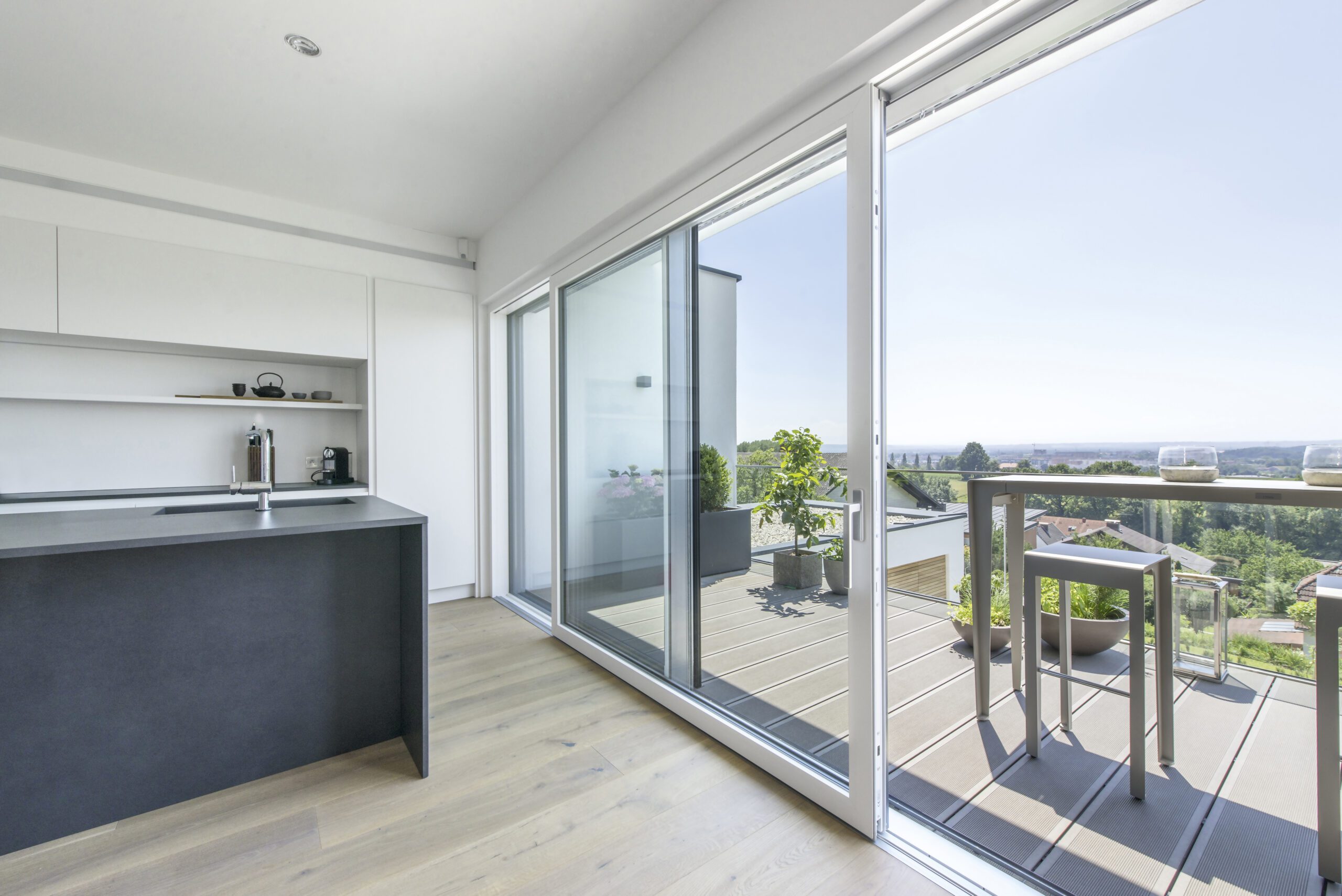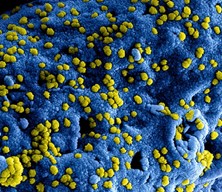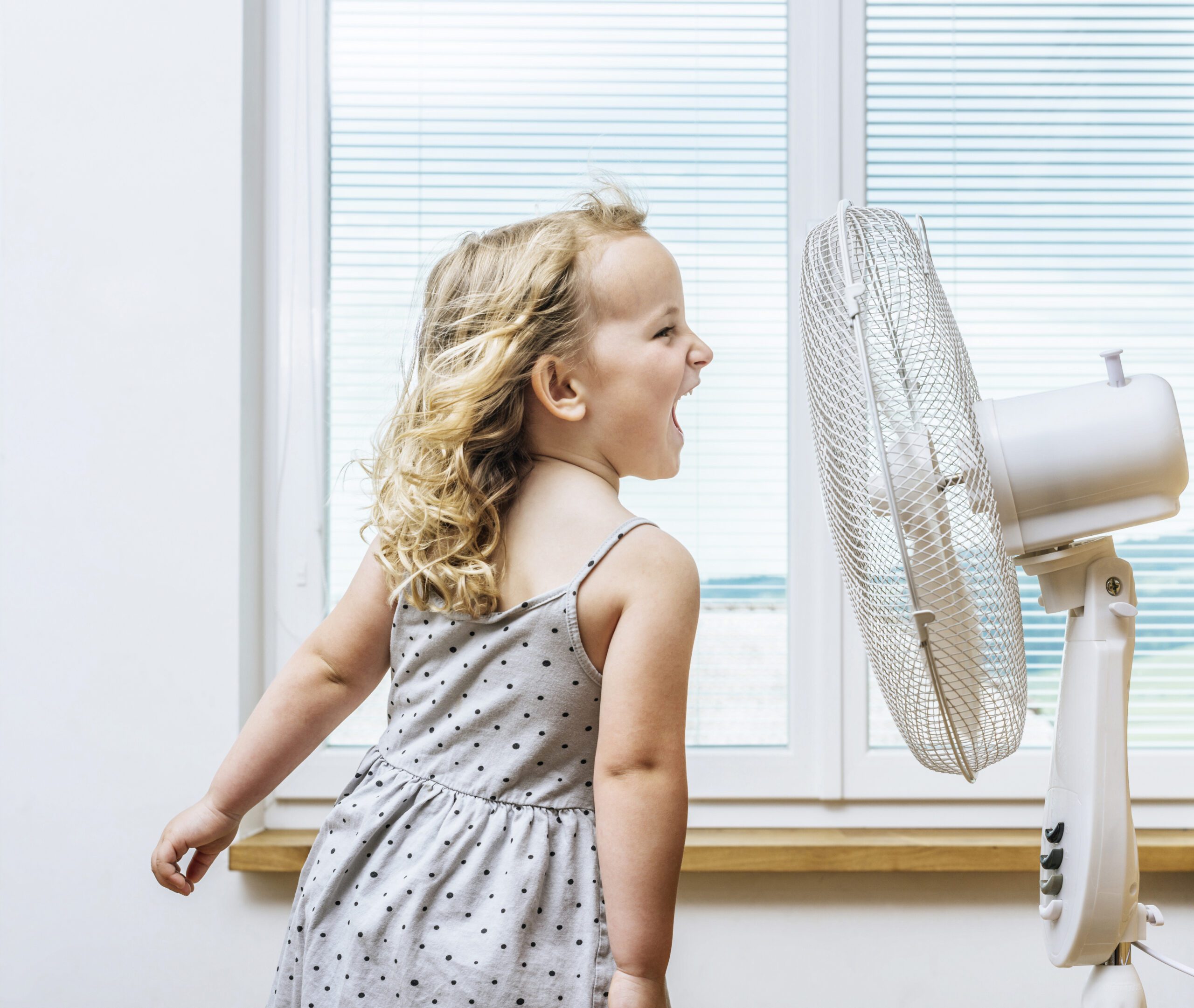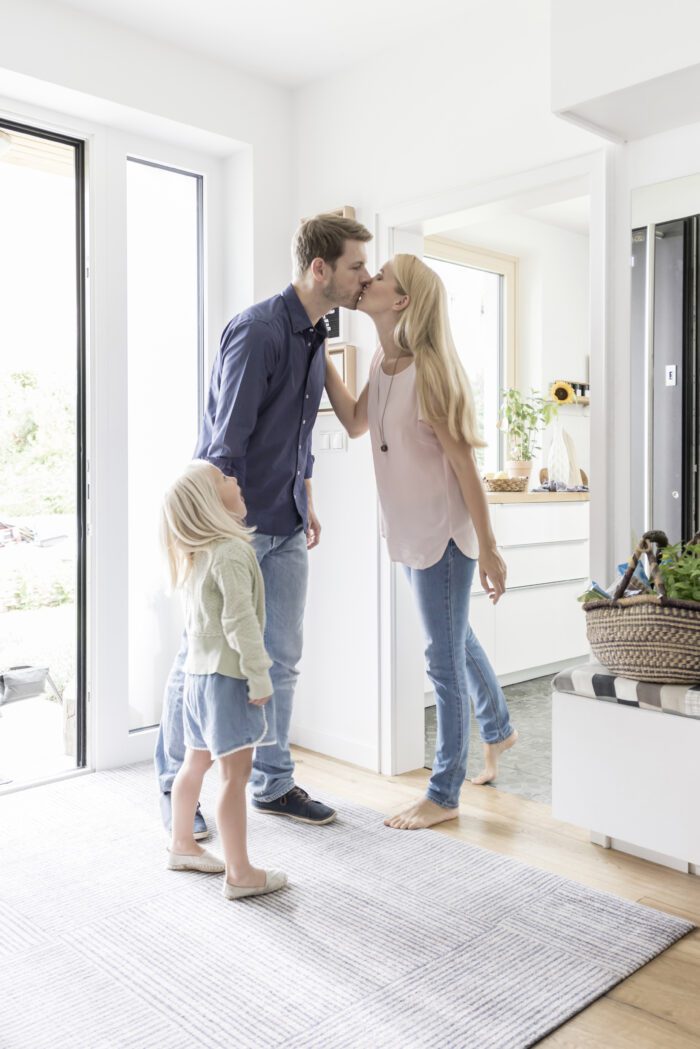
GSW // HOW DO WE TRANSFORM A POLLUTED INTERIOR ENVIRONMENT INTO A HEALTHY HOUSE? / GSW x Saint Gobain
People tend to spend most of their time indoors because many of them live in developed cities and communes. When we are not at home, we work, learn or even engage in fun activities, especially in closed spaces, specially designed for this purpose. Thus, 90% of our time is occupied with indoor activities. Therefore, it is essential to ensure a quality indoor environment: comfortable, productive and healthy, following well-regulated parameters and at the same time design practices that take into account: temperature, lighting, noise pollution, adequate ventilation and the quality of the air we breathe. . This is particularly important because, contrary to what we might think, air pollution is much higher indoors than outdoors.
Indoor air can not only cause discomfort and affect productivity, but could very well become a potential threat to occupant health, as it could contain: a wide range of pollutants, particles and biological contaminants, including volatile chemicals. These elements tend to manifest themselves in our immediate surroundings, embedded in many of the building materials, finishing or even everyday use. Elevated levels of exposure can cause health problems, such as asthma, infections and intoxication. In fact, almost half of all respiratory diseases are caused or aggravated by poor indoor air quality.
In addition, some of these contaminants cannot be easily detected and felt by residents, which exposes them to health risks. Therefore, it is important to know about the different pollutants that are emitted or generated by most of the materials and products that shape the spaces we live in every day. We will explore the consequences of choosing some of the most common materials and present some “active” products as alternatives, which could even help to improve indoor air quality.
It is surprising to know that in many cases, air pollution is 100 times higher indoors than outdoors. This would lead us to consider the many types and sources of pollutants that exist in our constant everyday environment.
What exactly are these air pollutants and how do they manifest at home?
Contaminants inside are of different sizes and compositions. These could be microorganisms such as fungi, which include mold, which grow on various surfaces. Mold tends to grow in humid and hot environments (70% to 95% humidity level) and can be found in poorly ventilated areas or in humid materials. Molds can release spore particles into the air, contributing to their spread and harming the health of occupants.
Other types of pollutants in the category of microorganisms are bacteria, living single-celled organisms that are found around us, whether they are on surfaces, in the air, in dust or in water. While most bacteria are generally harmless, some species can be harmful, especially to vulnerable occupants. There are several sources of bacteria inside, which can be emitted from the outside air, from tenants (for example, the daily material brought into the house) or from poorly maintained ventilation systems.
Some biological pollutants could also be molecular like endotoxins, which are molecular complexes carried by certain bacteria. Allergens are also molecular type contaminants that can come from mold spores, insects, pets, rodents and so on.
 Particles, including viruses and pollen, are the third form of indoor air contaminants. They are also usually brought into the house from outside sources (hosts or airflows).
Particles, including viruses and pollen, are the third form of indoor air contaminants. They are also usually brought into the house from outside sources (hosts or airflows).
There are several common sources for airborne particles that could emanate from: outside air, cleaning products and smoke. They can also develop due to inefficient designs that cause inadequate air circulation and ventilation.
 Other indoor air contaminants should be mentioned. Carbon dioxide (CO2) is an indoor air pollutant that can have harmful effects on human well-being; but its main source of emissions inside is created simply by the exhalation of occupants, tobacco smoke or the burning of household appliances. Given that the typical values of CO2 in the outside air are between 300 and 500 ppm, they tend to be much higher indoors, with a maximum recommended concentration between 600 and 1000 ppm, depending on the standards adopted.
Other indoor air contaminants should be mentioned. Carbon dioxide (CO2) is an indoor air pollutant that can have harmful effects on human well-being; but its main source of emissions inside is created simply by the exhalation of occupants, tobacco smoke or the burning of household appliances. Given that the typical values of CO2 in the outside air are between 300 and 500 ppm, they tend to be much higher indoors, with a maximum recommended concentration between 600 and 1000 ppm, depending on the standards adopted.
As for volatile organic compounds (VOCs), of which formaldehyde is the most common, they can come from both built and natural building and finishing materials, including binders, glues, coatings, paints and even wood. . They could also come from household furniture (fabrics and carpets) or from daily cleaning chemicals. VOCs are extremely worrying because they can easily evaporate at room temperature and are found in much higher concentrations inside, due to the lack of oxidizing UV light inside.
Finally, some common gaseous contaminants, such as Radon gas, are simply found in the ground by the decomposition of uranium naturally present in soil and water and would spread to homes through the air and building foundations.
However, different microorganisms behave differently in standard environments. For example, when there are certain favorable conditions (temperature, water availability, nutrients, etc.), bacteria or fungi (including mold) multiply and proliferate. This is true in water, air and inanimate areas. However, viruses survive only for certain finite periods in such environments. They are inert outside their host and cannot multiply. Hence the need to include a solution that treats all forms of pollutants under different conditions.
The effects of indoor air contaminants on human health
Some types of indoor air pollutants have also been linked to headaches and concentration problems, as several studies have suggested that elevated CO2 levels affect people’s performance. The results showed that cognitive function would be less efficient with higher CO2 rates. This has proven that polluted indoor air affects performance and productivity.
Other chemicals and contaminants (VOCs including formaldehyde) have also been suspected to affect the occupant’s concentration. In addition, they could cause more serious problems, such as irritation, allergic reactions, infections and poisoning. The American College of Allergology, Asthma and Immunology also said that 50% of all respiratory diseases are caused or aggravated by poor indoor air quality.
Recommended rates can be found in various standards, including ASHRAE 62.1 or even some WHO guidelines. These references are a valuable resource when designing any type of space, as they specify the ventilation rates required for new construction and also those needed to improve indoor air quality in existing buildings. Many of these standards also highlight the maximum levels of air pollutants (specific to each pollutant) needed to maintain an acceptable indoor air quality.
However, measuring biological contaminants is not yet an easy and affordable option for ordinary building users. Therefore, inadequate rates of indoor air pollutants are rarely detected before the onset of physical discomfort and potential health complications. Because it is difficult to control or remedy what cannot be measured, designers should use effective preventive design solutions to reduce and control indoor air pollution.
What are the challenges?
In addition to the inability of occupants to easily and consistently measure indoor air pollutant rates, other difficulties need to be highlighted. For example, a VOC and other gaseous contaminants cannot be filtered or captured.
Another aspect to remember is this: biological contaminants cannot exist in our environment unless they have liquid water. Humidity favors the growth and spread of indoor air pollutants. Then again, moderate humidity levels between 30% and 60% are also a means to achieve interior comfort.
We will now talk about some strategies that you can add into your home. Starting from our GSW Windows to the Saint Gobain glass.

What are the best remediation strategies?
Good architecture and tailor-made design are the most important means of reducing and controlling the growth of indoor air pollutants. Architects should consider several parameters just before starting to design a house or building to ensure the comfort and well-being of future occupants. Adequate ventilation, exposure to natural light, insulation of the building envelope and non-toxic materials from sustainable sources are practices that should be considered. A comfort-based mentality should ideally be adopted from the pre-design phase to post-teaching maintenance. There are many intelligent design solutions to ensure high indoor air quality.
Adequate natural ventilation is one of the first considerations we must consider when designing a house. The orientation of the building and a well-designed arrangement of the openings would promote an efficient air flow through the built space (cross ventilation, cooling towers). Another aspect is the implementation of a functional hybrid ventilation system indoors that would help dilute some contaminants.
In addition to designing a properly ventilated and well-controlled home, the architect should consider managing air leaks in the building by maintaining a stable indoor air pressure. Although natural ventilation is important, it also implies that any lost air must be replaced to have a neutral indoor / outdoor air pressure. It is essential not to allow uncontrolled air infiltration, as this could lead to additional pollutants. GSW windows can give you that extra push into healthy living.
Despite the fact that natural ventilation is generally preferred because it is considered to be CO2-free and that most standard mechanical systems use a lot of energy, risks could arise from renewing unstudied natural air in the home, as outdoor emissions such as air pollution traffic and other microparticles, could be brought inside. Insulating the connecting spaces is a way to minimize the basket effect. Disconnection of spaces and compartmentalization is another aspect taken into account during design.
In addition to the above, the most efficient means would be the implementation of intelligent mechanical ventilation / air conditioning systems with adequate filtration and heat / cold recovery. Complementary to natural ventilation, artificial indoor heating and cooling systems could be equipped with specific filters to reduce the rate of airborne particles.
Effective ventilation and filtration standards can also be reviewed through the Joint Research Center’s (JRC) Science for Policy report. It is an informative basis of European standards that can be returned to, as it introduces the HELTHVENT Report WP5 (2012) which evaluates ventilation standards related to indoor air quality and compares them between 16 countries. It is a very important document to follow, more precisely the recommendations for filtering mechanical ventilation that are not yet applied too often in European homes.
Another extremely important step would be to control humidity and promote dehumidification. A dry foundation as well as the building envelope are essential for maintaining a controlled humidity rate, which would be comfortable for the occupants, but which would prevent the development of mold or other pollutants. Looking for dry construction and finishing materials is also a good step in promoting high indoor air quality.

 Finally, one of the most effective ways to mitigate the spread of indoor air contaminants is to choose the best material. It is possible to reduce and eliminate sources of pollution. This can be done by using modern non-toxic materials, which are created specifically for construction and safe indoor use. Searching for eco-labeled or health-certified items is a good solution to reduce indoor air pollution. The design of buildings and dwellings with articles manufactured using new technologies can also contribute to the achievement of coveted certifications, such as BREEAM, LEED and WELL (assessment systems).
Finally, one of the most effective ways to mitigate the spread of indoor air contaminants is to choose the best material. It is possible to reduce and eliminate sources of pollution. This can be done by using modern non-toxic materials, which are created specifically for construction and safe indoor use. Searching for eco-labeled or health-certified items is a good solution to reduce indoor air pollution. The design of buildings and dwellings with articles manufactured using new technologies can also contribute to the achievement of coveted certifications, such as BREEAM, LEED and WELL (assessment systems).
Materials such as Rigips® Activ’Air® drywall and ceilings with Activ’Air® technology (eg Gyptone®, Rigitone®) capture, retain and decompose up to 70% of the formaldehyde level in indoor air, when using 1 sqm plate at 1 m3 interior volume. They offer passive technology and are therefore long-lasting, maintenance-free and more effective in reducing formaldehyde than additional ventilation.
Saint-Gobain holds an International patent for the revolutionary Activ’Air® technology. The effectiveness of this technology has been carefully analyzed and demonstrated in the laboratory. Its effectiveness is immediate, long-lasting, tested even with various types of finishes and decorations: paper wallpaper, fiberglass wallpaper, mineral paint, acrylic paint. The tests were performed by the independent ECO institute in Cologne and the EUROFINS Laboratory Group in Denmark, according to ISO 16000 – 23. The product received the “Approved” stamp from the Institute for Building Biology (IBB) in Rosenheim. This stamp highlights its ability to contribute to a healthy life, in parallel with its active role in protecting the environment. Saint-Gobain partnered us, at GSW, into giving our clients the best products.
Choosing these materials is one of the easiest ways to maintain safe indoor air quality, as it offers a more practical and affordable solution for new construction, but also for restoration and renovation projects. Activ’Air® technology is therefore the ideal way to counteract formaldehyde in a home. Activ’Air® works even after several renovations, permanently reducing the level of formaldehyde.
As the last few months have shown, people may face new health risks. If they are poorly maintained, uncontrolled and improperly designed, our homes can harbor many air pollutants, causing both mild and severe discomfort. A few smart choices would therefore be very useful, consciously managing the environmental quality of spaces and increasing our overall well-being. Startby improving your air quality in your home, with our GSW Windows.








